When choosing tungsten carbide bushings for industrial equipment, one of the first questions buyers face is: Should I go with standard bushings or custom ones?
At first, it may seem easier to pick a standard size — after all, it’s faster and cheaper. But in many high-performance machines, custom tungsten carbide bushings offer better fit, longer lifespan, and lower total cost over time.
For decision-makers in industries such as 石油・ガス, chemical processing, marine, and power generation, understanding the trade-offs between standard and custom bushings helps balance cost, reliability, and long-term performance.
This guide explains how both options differ, when to choose each, and what to consider before ordering.
What Are Standard Tungsten Carbide Bushings?
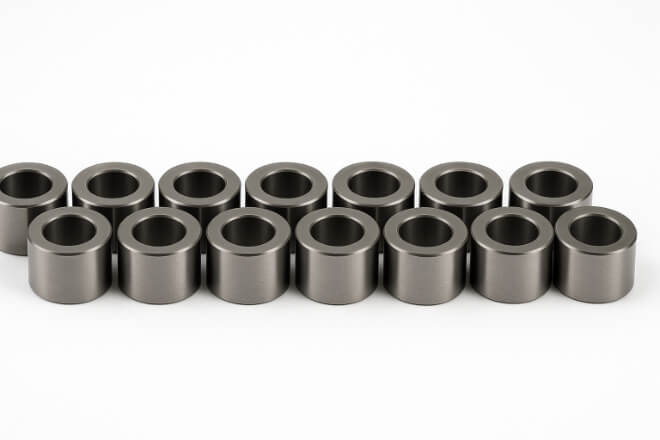
Standard bushings are pre-manufactured in common sizes and dimensions. They fit general-purpose applications and are often stocked for quick delivery.
Typical examples include:
Cylindrical bushings with standard inner and outer diameters
Flanged bushings for bearing housings
Press-fit bushings for rotating shafts
They are made using common tungsten carbide grades (such as YG6 or YG8) and are available in off-the-shelf catalog dimensions.
利点:
Short delivery time
初期コストが低い
Suitable for general machinery
However, standard bushings may not perfectly match your shaft tolerance, lubrication design, or working medium — which can lead to higher wear in long-term use.
What Are Custom Tungsten Carbide Bushings?
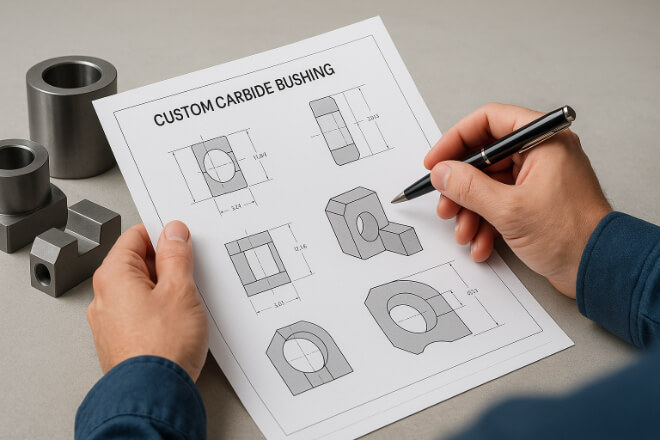
Custom bushings are designed and manufactured to match your equipment’s exact needs — not the other way around.
They can be produced in any dimension, geometry, or tungsten carbide grade based on your drawing or application data.
Customization may include:
Special inner/outer diameters
Tight tolerances (within ±0.002 mm)
Nickel-bonded grades for corrosive fluids
Grooves or oil channels for better lubrication
Special coatings
(e.g., TiN, DLC)
利点:
Perfect alignment and sealing
Longer life in harsh environments
Optimized for speed, temperature, or chemical resistance
Custom bushings require longer lead times and higher MOQ (Minimum Order Quantity), but they often reduce maintenance costs over the equipment’s lifetime.
Comparing Custom vs Standard Tungsten Carbide Bushings
The table below summarizes the main differences between custom and standard carbide bushings:
| 特徴 | Standard Bushings | Custom Bushings |
|---|---|---|
| Design Fit | Generic, fits common dimensions | Tailored to specific shaft or housing |
| Lead Time | 1–2 weeks (in stock) | 4–6 weeks (made to order) |
| Initial Cost | 低い | Moderate to high |
| Performance | Adequate for standard loads | Optimized for high stress or chemical media |
| 材質グレード | Fixed grades (e.g., YG8, K10) | Selectable grades (e.g., Ni binder, ultra-fine grain) |
| 最適な用途 | Maintenance, low-load machinery | OEM, critical systems, precision assemblies |
When to Choose Standard Bushings
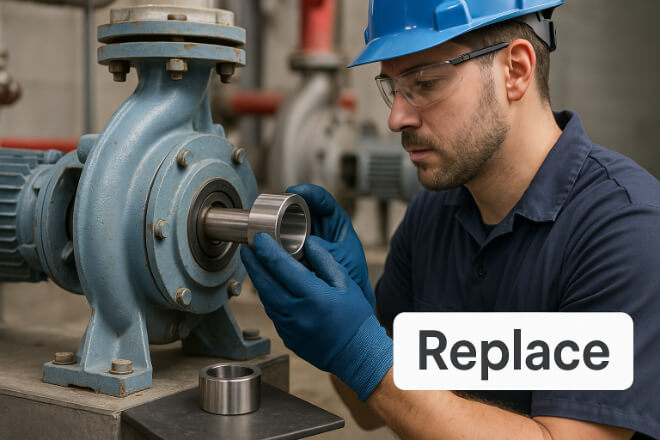
Standard tungsten carbide bushings are ideal when:
You need quick replacements for maintenance or repair
Your application operates under moderate pressure and temperature
The bushing serves as a support or alignment component
You need short lead times and low procurement cost
They are widely used in:
General industrial pumps
Light-duty compressors
Agriculture and water treatment equipment
If your goal is operational efficiency and easy sourcing, standard bushings provide the best value for non-critical equipment.
When Custom Bushings Are Worth the Investment
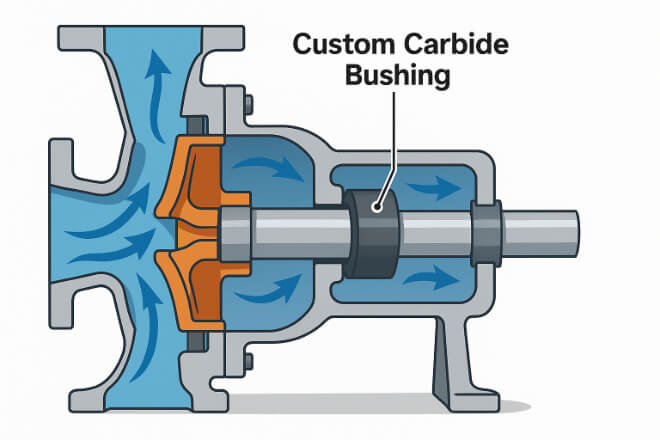
For demanding industries, customization brings measurable benefits.
You should choose custom tungsten carbide bushings when:
The machine runs in corrosive or abrasive fluids
You need specific tolerances to minimize vibration
The application requires long-term reliability and reduced downtime
Equipment operates under high pressure or high temperature
Custom bushings also allow engineers to select:
Nickel-bonded carbide for chemical resistance
Ultra-fine grain carbide for better 耐摩耗性
Special geometries for compact equipment
次のような業界では 石油・ガス, marine, and power generation, customization ensures fit, function, and longevity far beyond off-the-shelf parts.
コストに関する考慮事項
It’s a common misconception that custom bushings are always more expensive.
While the unit price may be higher, the total cost of ownership is often lower due to reduced maintenance and longer service intervals.
Here’s a simple breakdown:
| 要素 | Standard Bushings | Custom Bushings |
|---|---|---|
| Purchase Cost | 低い | Higher initial investment |
| Maintenance Frequency | 頻繁な交換 | Less frequent maintenance |
| Operational Downtime | より高い | Lower due to precision fit |
| Long-Term ROI | 適度 | 高い |
The decision depends on whether your goal is short-term replacement or long-term efficiency.
How to Decide Which Option Is Right for You
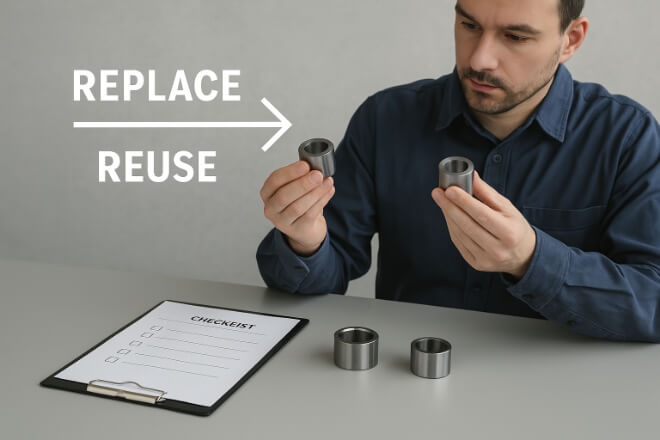
Choosing between custom and standard bushings depends on your priorities.
Ask yourself the following:
What are my operating conditions (pressure, temperature, fluid type)?
How critical is this part to machine uptime?
Can I afford longer lead time for better precision?
Do I need special materials or coatings?
What’s the annual usage volume?
例えば:
A standard water pump may use catalog bushings.
A deepwell or subsea pump may require customized, corrosion-resistant designs.
Decision-makers should discuss these parameters early with the supplier to find the best balance between cost and performance.
結論
The choice between custom and standard tungsten carbide bushings is not about which is “better” — it’s about which fits your equipment goals and operating environment.
Standard bushings are perfect for fast replacements and low-cost maintenance.
Custom bushings deliver unmatched reliability and precision for demanding applications.
By evaluating your operational needs, materials, and budget, you can make an informed decision that supports both short-term efficiency and long-term performance.
企業の詳細を知りたい場合は、お気軽にお問い合わせください。 お問い合わせ。
